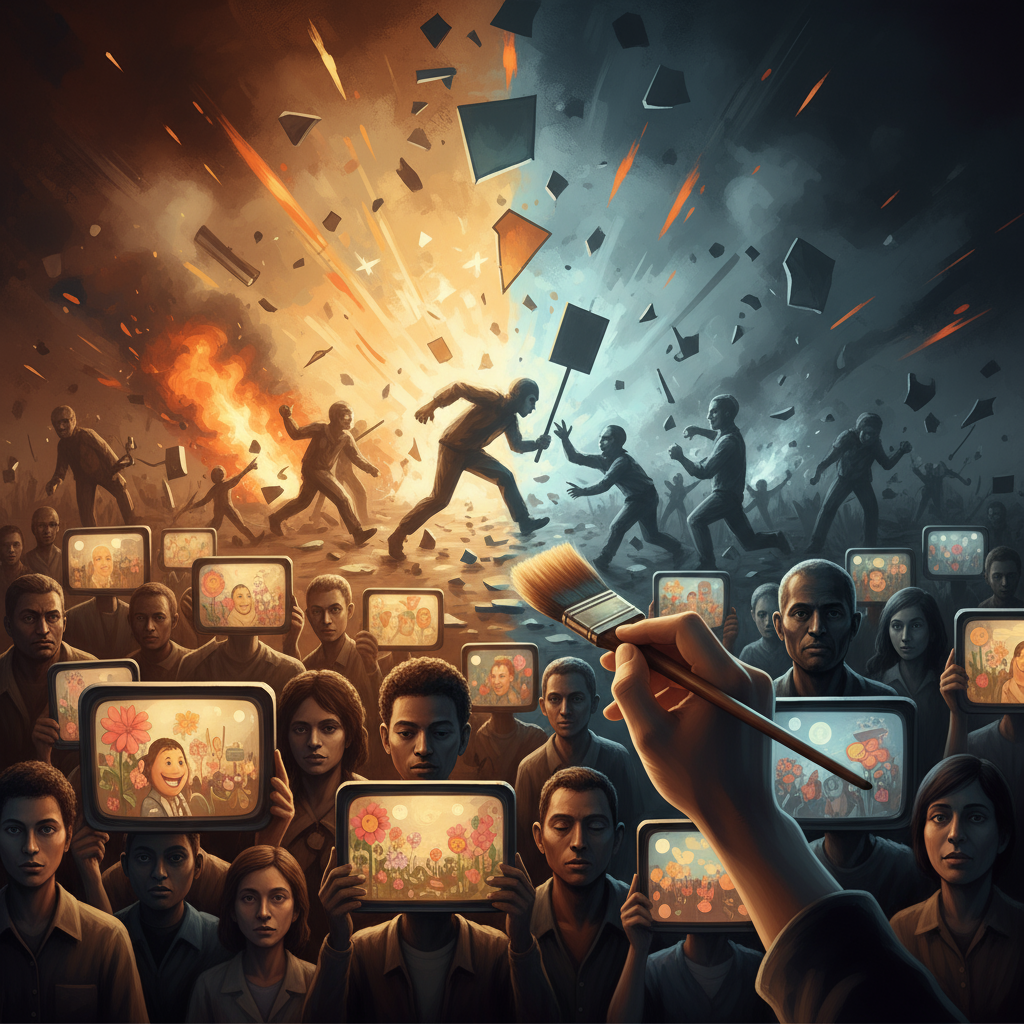The Echo Chamber Effect: How Right-Wing Influencers Framed the Portland Protests for a Nation (and a President)
Remember the intense images and narratives surrounding the Portland protests? For many, the perception of those events was not primarily shaped by traditional news outlets or on-the-ground reporting, but by a powerful, often less visible, force: right-wing influencers. These digital voices, operating across various platforms, played a pivotal role in constructing a particular understanding of what was happening in Portland, deeply influencing public opinion and, remarkably, even the former President’s public statements and policy decisions. This isn’t just about partisan punditry; it’s about the intricate ways information flows in our digital age and how curated narratives can become dominant realities.
Curating Chaos: The Narrative of Anarchy and Violence
From the outset, a consistent narrative emerged from right-wing influencer circles: Portland was a city consumed by anarchy, a lawless wasteland where dangerous radicals ran rampant. This perspective often downplayed the underlying issues fueling the protests, such as racial injustice and police brutality, instead focusing almost exclusively on property damage, clashes with law enforcement, and allegations of widespread violence. Videos and images, often decontextualized or selectively edited, circulated rapidly, showing overturned dumpsters, spray-painted buildings, and confrontations.
These influencers skillfully employed hyperbole and emotionally charged language, painting protesters as “antifa terrorists,” “militants,” or “thugs” rather than citizens exercising their right to protest. This framing was crucial. By demonizing the participants, they could justify aggressive counter-measures and dismiss the legitimacy of the protests’ core demands. The constant drumming of this narrative created a sense of imminent danger and crisis, resonating with an audience already predisposed to distrust liberal urban centers.
Bypassing Traditional Media: Direct Lines to Supporters and the Oval Office
One of the most significant aspects of this phenomenon was the ability of right-wing influencers to bypass traditional media gatekeepers. Their content, shared tirelessly across social media platforms like Twitter, Facebook, and YouTube, reached millions directly. This direct line of communication allowed them to control the narrative without the filters or fact-checking often applied by mainstream news organizations. They essentially created their own news ecosystem, where their version of events was amplified and reinforced.
What makes this even more compelling is the direct conduit to the highest office in the land. Research indicates that former President Trump himself actively consumed and retweeted content from these very influencers. His public statements and tweets frequently mirrored the language, framing, and even specific details propagated by these digital figures. This created a powerful feedback loop: influencers shaped the narrative, the President adopted it, and his adoption further legitimized and amplified the influencers’ message to a wider audience. This symbiotic relationship transformed internet chatter into official government discourse.
The Impact: Shifting Perceptions and Justifying Federal Intervention
The influence of these right-wing voices wasn’t merely academic; it had tangible consequences. By continuously painting a picture of an out-of-control city, they successfully shifted national perceptions. Polls and surveys during the period showed a significant portion of the public, particularly those consuming right-leaning media, viewed the Portland protests as primarily destructive and violent, rather than as expressions of legitimate grievance. This paved the way for, and arguably justified in the minds of many, the deployment of federal agents to Portland.
The argument that federal intervention was necessary to restore order, protect federal property, and quell “insurrection” gained traction precisely because of the narrative carefully constructed by these influencers. They created the “problem” of pervasive lawlessness that the federal government then ostensibly stepped in to “solve.” The actions taken by federal agents, often criticized as heavy-handed and unconstitutional by civil liberties groups, were presented within this framework as necessary measures against dangerous extremists.
Navigating a Fragmented Information Landscape
The case of Portland and the role of right-wing influencers serves as a powerful illustration of our fragmented information landscape. In an era where trust in traditional media is often low, and social media algorithms prioritize engagement over accuracy, narratives can be constructed and amplified with astonishing speed and efficacy. Understanding how these narratives are built, disseminated, and ultimately influence public opinion and policy is crucial for media literacy and for fostering a more informed citizenry.
The Portland protests highlight the profound impact of digital echo chambers and the capacity of influential online voices to dictate public perception, even at the highest levels of government. As we consume information in an increasingly decentralized world, recognizing the sources, understanding the biases, and critically evaluating the narratives presented to us becomes more vital than ever. The lessons from Portland are not just about a specific set of events; they are about the enduring power of controlled narratives in shaping our understanding of reality.
